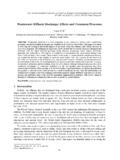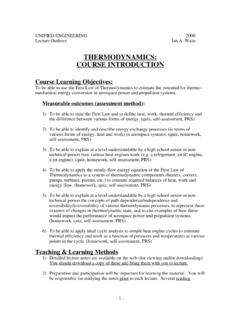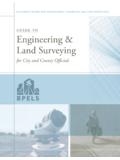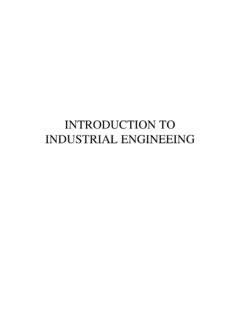Transcription of SAFETY IN THE CHEMICAL PROCESS INDUSTRIES STUDY GUIDE
1 SAFETY IN THE CHEMICAL PROCESS INDUSTRIES STUDY GUIDE D. A. Crowl, C. DeFrain, A. Edelson DVD Edition 2005 Wayne State University Michigan Technological University It is sincerely hoped that the information presented in this instructional material will lead to an even more impressive SAFETY record for the entire industry. However, neither Wayne State University, the American Institute of CHEMICAL Engineers or BASF Corporation can accept any legal responsibility whatsoever for the consequences of its use, or misuse, by anyone. SAFETY IN THE CHEMICAL PROCESS INDUSTRIES STUDY GUIDE D. A. Crowl, C. DeFrain, A. Edelson DVD Edition WAYNE STATE UNIVERSITY MICHIGAN TECHNOLOGICAL UNIVERSITY Distributed by: American Institute of CHEMICAL Engineers 3 Park Avenue New York, NY 10016-5991 Copyright 1988, 2005 Wayne State University TABLE OF CONTENTS PAGE 1.
2 introduction 1 2. How to Use This STUDY GUIDE 1 3. Biographies of the Presenters 2 4. Acknowledgements 3 VIDEOS DVD PART TITLE 1 1 introduction to Series 4 1 2 introduction to Corporate SAFETY 6 1 3 Laboratory SAFETY and Inspections 9 1 4 Personal Protective Equipment 15 2 1 PROCESS Area SAFETY Features 18 2 2 PROCESS Area SAFETY Procedures 26 2 3 PROCESS Area Inspections 31 3 1 DIERS and VSP 34 3 2 Dust and Vapor Explosion Apparatus 46 4 1 Informal SAFETY Reviews 60 4 2 introduction to Formal SAFETY Reviews 66 4 3 Formal SAFETY Review 70 APPENDICES: I. Glossary 76 SAFETY Review Review 81 11. introduction SAFETY is becoming an increasingly important activity in the CHEMICAL industry.
3 This is due to several recent significant CHEMICAL accidents, increasing public awareness and skyrocketing liability and accident costs. This STUDY GUIDE is intended to accompany the video series SAFETY in the CHEMICAL PROCESS INDUSTRIES . This video series presents a strong introduction on the application of CHEMICAL PROCESS SAFETY technology in an actual CHEMICAL facility. All video material was taped at the CHEMICAL Engineering Research Department at BASF Corporation in Wyandotte, Michigan. Most of the demonstrations are given using actual PROCESS equipment in the BASF PROCESS Development (PD) facility. This series is designed as instructional material for 1) undergraduate students in CHEMICAL or mechanical engineering, and 2) industrial engineers or chemists who are being introduced to industrial SAFETY for the first time.
4 This series provides significant supplementary material for an existing undergraduate CHEMICAL engineering course on CHEMICAL PROCESS SAFETY . This series was funded by the National Science Foundation and by BASF Corporation. Special thanks are given to 1) the contributing BASF presenters, 2) John Davenport and Stanley K. Stynes for introducing the segments, and 3) Robert J. Whitney for directing and managing the video production of this series. All of these individuals committed significant time and effort to the project. We hope that the material presented in this series will be valuable for improving your awareness and practice of SAFETY in your industrial experiences. 2. HOW TO USE THIS STUDY GUIDE This STUDY GUIDE is designed to supplement, but not replace the video material.
5 It can be effectively used for 1) taking notes during the viewing of the videos, 2) studying and reviewing the material after the initial showing, and 3) as a future reference. Almost all of the figures and diagrams shown in the videos are included in the GUIDE to assist the viewer. The organization of the STUDY GUIDE is as follows. Each video segment has a well identified section within the STUDY GUIDE . The first page of each section introduces the segment. This includes a brief Overview, a list of Objectives, identification of the segment introducers and BASF Presenters, a list of Key Terms, and a list of Supporting Materials and References. The Key Terms listed are defined in the Glossary in Appendix I. The succeeding pages present a detailed Outline of the material presented.
6 This includes a blank section on the right hand side of the page for taking notes during the viewing. The video segments present the viewer with a number of lists of important concepts. These lists are given in the Outline section, enabling the viewer to concentrate on the material rather than excessive note taking. Important figures used in the series are also provided in the Outline. 23. BIOGRAPHIES OF THE PRESENTERS AND INTRODUCERS (Note: These biographies are written in the present tense and reflect the status of the individuals at the time this STUDY GUIDE was originally produced in 1988). Gerry Boicourt is a superviser in CHEMICAL Engineering Research at BASF Corporation. He is responsible for scale-up activities and experiments for SAFETY . These experiments include the Vent Sizing Package (VSP), explosive limit device and the dust bomb apparatus.
7 Mike Capraro is a manager in CHEMICAL Engineering Research at BASF Corporation. Mike has several years experience in production and is more recently working on scale-up of processes. He is a member of the DIERS Users Group. John Davenport is Director of Research at Industrial Risk Insurers, a major insurer of petroleum and CHEMICAL plants. He has extensive experience with fires and explosions, accident investigations, and SAFETY inspections. He is particularly interested in accident case histories. He is a member of the AICHE Loss Prevention Committee and the AICHE/CCPS Undergraduate Education Committee. Mark LaRue is a technician in quality control in CHEMICAL Engineering Research at BASF Corporation in Wyandotte, MI.
8 Joe Louvar is Director of CHEMICAL Engineering Research at BASF Corporation. He is also an Adjunct Faculty member in the Department of CHEMICAL Engineering at Wayne State University. He is a member of the AICHE Loss Prevention Committee and the AICHE/CCPS Undergraduate Education Committee. Rick Malechuk is a maintenance supervisor in CHEMICAL Engineering Research at BASF Corporation in Wyandotte, MI. Jim Strickland is a Manager of Construction and Operations at BASF Corporation. He is responsible for facilities operations, construction and the design of new pilot plant processes. He is also responsible for SAFETY and environmental regulations adherence. Stan Stynes is Professor of CHEMICAL Engineering at Wayne State University. While he admits to being a recent newcomer in the area of CHEMICAL PROCESS SAFETY , he understands its importance to the undergraduate educational experience and has taken steps to integrate concepts of SAFETY , health and loss prevention into his courses.
9 34. ACKNOWLEDGEMENTS The following individuals contributed to the production of this video series: Executive Producer: Daniel A. Crowl Director: Robert J. Whitney Introducers: John Davenport and Stanley K. Stynes BASF Participants: Gerry Boicourt, Mike Capraro, Mark LaRue, Joe Louvar, Rick Malechuk, Jim Strickland Technical Reviewers: Robert M. Bethea, John C. Friedly, Stanley S. Grossel, Joseph J. Levitsky, Robert W. Powitz, Robert M. Rosen, Richard F. Schwab, Leonard Wenzel STUDY GUIDE Development: Caron DeFrain, Daniel A. Crowl, Alvin L. Edelson Lighting: Rick DeGroot Production Crew: Peter I. Hendrix, Lisa A. Kret, Cathyrn C. McDowell, Thomas P. Schmidt.
10 John C. Byrd Segments of these tapes were produced as a special project of WTVS/56, Detroit, MI. Project Coordinator: Donald Sandberg and were produced through the facilities of Continental Cablevision, Southfield, MI. Unit Manager: Shannon Kish Technical Director: Bob Davis Production Crew: David Cavanaugh, Reggie Smith These videos were funded by The National Science Foundation and BASF Corporation. 4 DVD 1: introduction AND LABORATORY AREAS PART 1 introduction TO SERIES OVERVIEW The video series on CHEMICAL PROCESS SAFETY is introduced. The narrators introduce themselves, give definitions, describe the importance of SAFETY , and describe the setting for the series. OBJECTIVES Alter viewing this tape, you should be able to: understand the importance of CHEMICAL PROCESS SAFETY .






